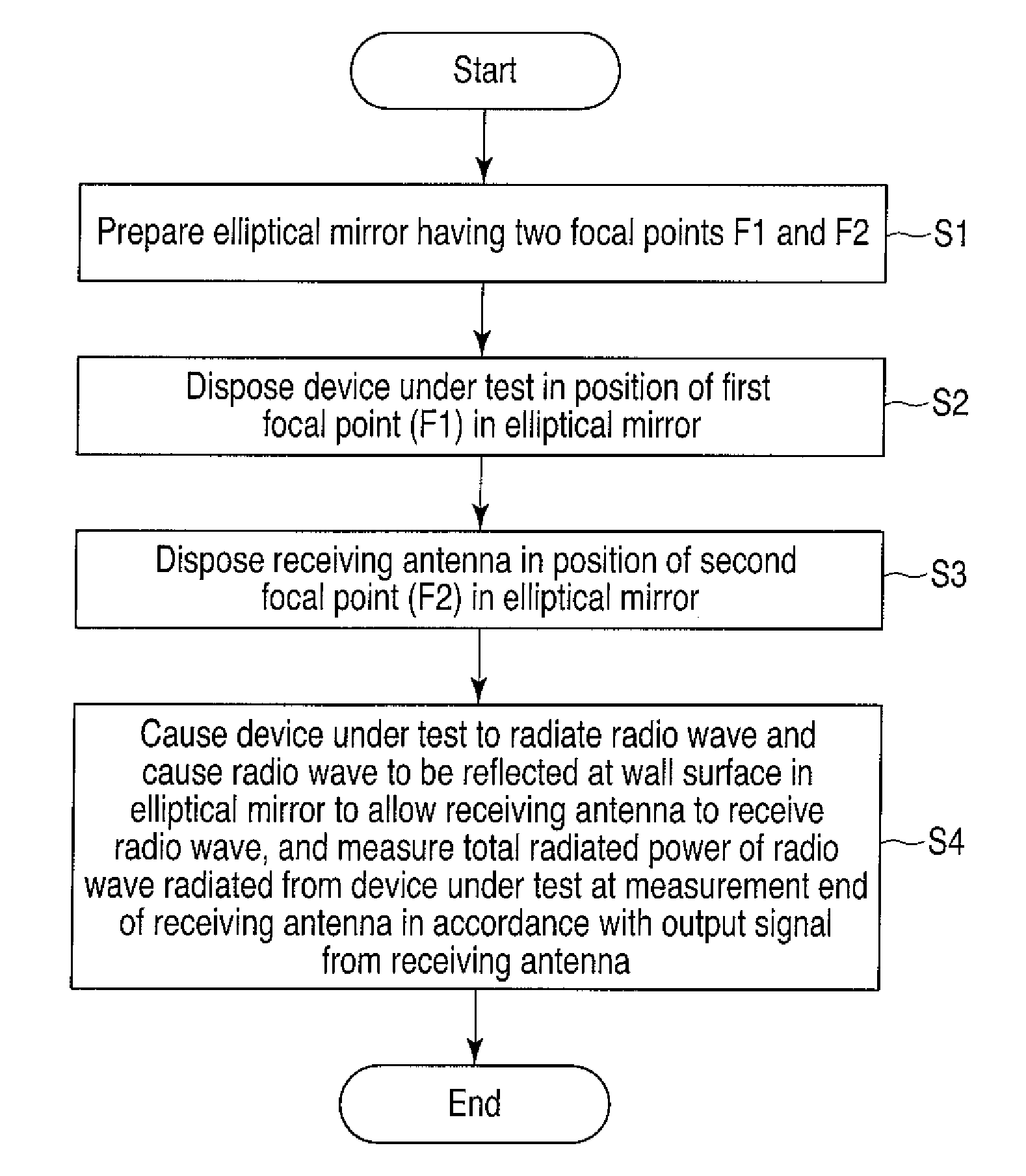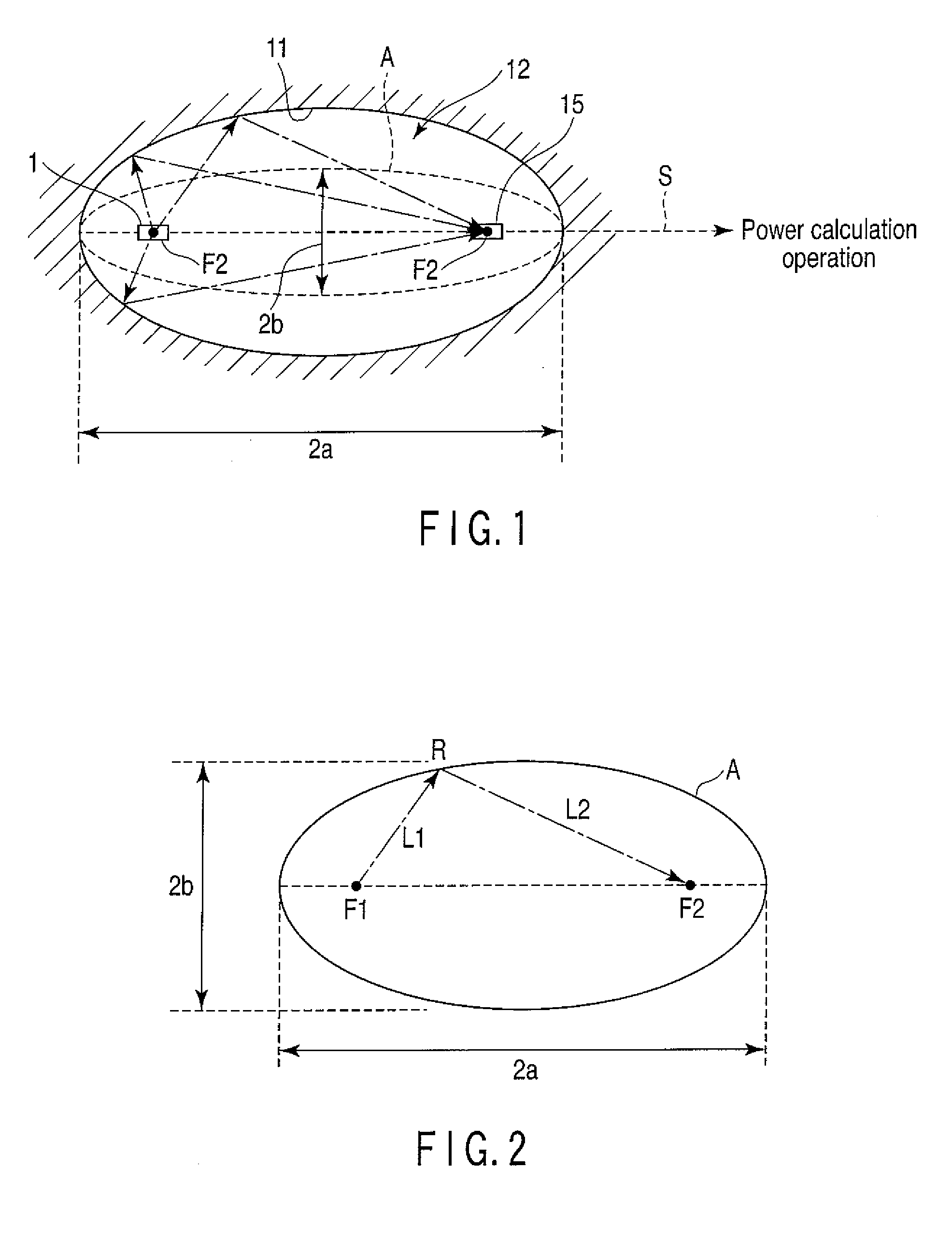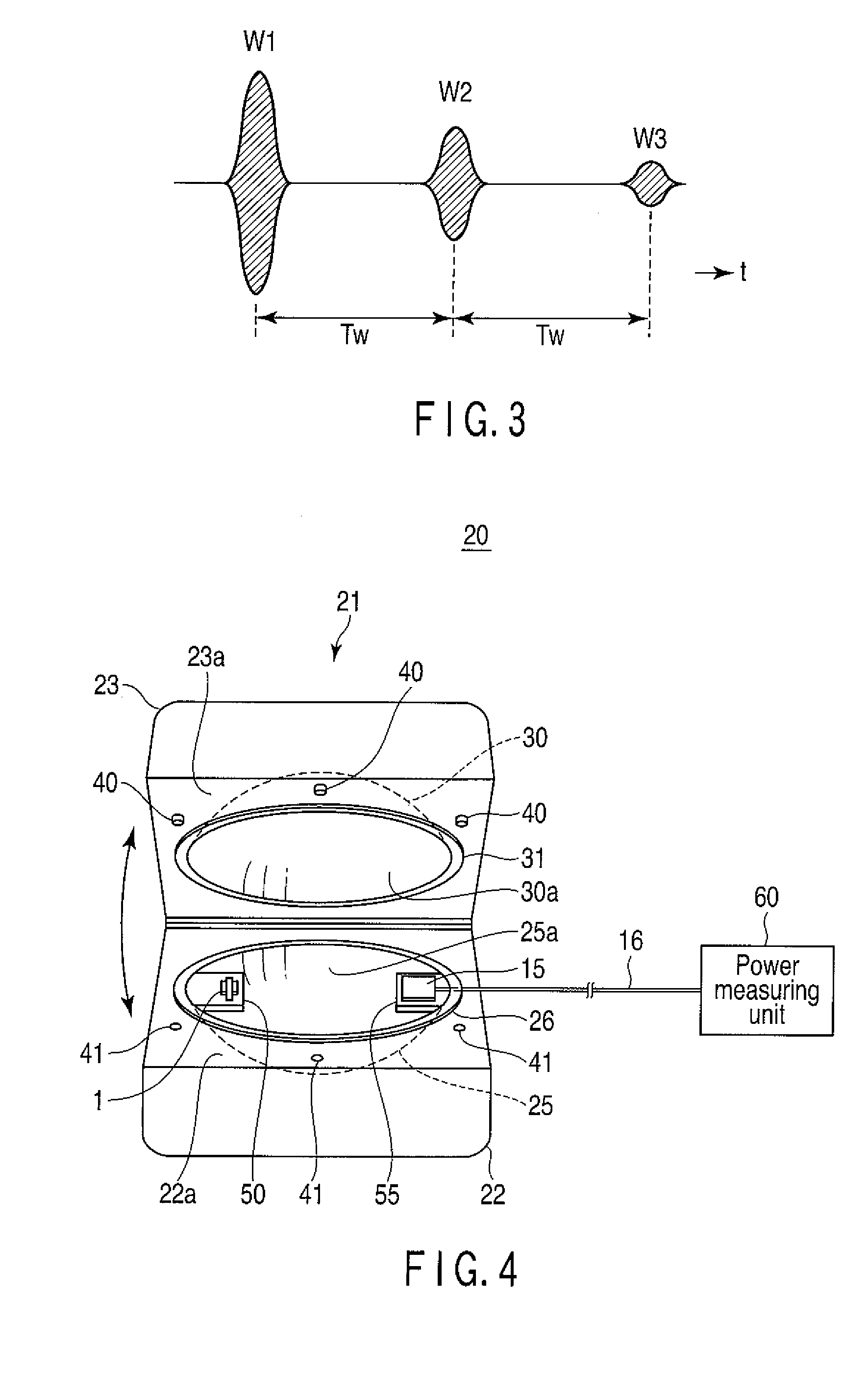Method, coupler and apparatus for measuring radiated power
a technology of radiation power and coupler, which is applied in the direction of spectral/fourier analysis, instruments, transmission monitoring, etc., can solve the problems of complicated measuring apparatus, short measurement time, and device without test terminal, and achieve the effect of short measurement time, small size and high accuracy
- Summary
- Abstract
- Description
- Claims
- Application Information
AI Technical Summary
Benefits of technology
Problems solved by technology
Method used
Image
Examples
first embodiment
[0146]More specifically, in a method for measuring a radiation power according to a first embodiment of the present invention, as illustrated in FIG. 16, first, an elliptical mirror 10 is prepared that has, as described above, a closed space 12 which has an elliptical spherical shape obtained by rotating an ellipse by a predetermined angle about an axis line passing through two focal points F1 and F2 thereof and which is enclosed by a metal wall surface 11 (step S1).
[0147]Then, in the closed space 12 of the elliptical mirror 10 having the two focal points F1 and F2 which is prepared at step S1, a device under test 1 which can radiate a radio wave, such as a small wireless communication terminal, is disposed in the position of one of the two focal points F1 and F2, e.g., the focal point F1, on a rotation axis (long axis or short axis) line such that the center of radiation of a radio wave therefrom substantially coincides with the focal point F1 (step S2).
[0148]Subsequently, in the c...
second embodiment
[0156]When a radio wave that is radiated from the device under test 1 and reflected once at the wall surface 11 and reaches the receiving antenna 15 at the focal point F2 is a primary wave, inside the closed space 11 of the elliptical mirror 10 such as that described above, there are multiple reflections where a secondary wave being a radio wave which is scattered by the receiving antenna 15 having received the primary wave and is reflected again at the wall surface 11 and returns to the focal point F1 and is further reflected at the wall surface 11 and inputted to the receiving antenna 15 at the focal point F2, or higher-order radio waves are inputted to the receiving antenna 15.
[0157]When there are such multiple reflections, a large standing wave is set up inside the closed space 11 of the elliptical mirror 10 and an electromagnetic field has a complicated distribution and thus it becomes difficult to accurately measure total radiation power of a radio wave radiated from the devic...
third embodiment
[0212]A method for measuring a radiation power according to a third embodiment of the present invention is configured such that step S4 in the aforementioned first embodiment where the total radiation power is measured at the measurement end of the receiving antenna 15 includes steps S5a, S6a, and S7a such as those illustrated in FIG. 22.
[0213]Specifically, when the total radiation power is measured at the measurement end of the receiving antenna 15, as illustrated in FIG. 22, first, for each of a plurality of measurement frequencies which are predetermined in a predetermined frequency range, with a continuous wave which has the predetermined measurement frequency being radiated from the device under test 1, received power PL of the receiving antenna 15 is sequentially measured through the measurement end of the receiving antenna 15 (step S5a).
[0214]Then, with the radio wave radiation from the device under test 1 being stopped, for each of the plurality of measurement frequencies wh...
PUM
 Login to View More
Login to View More Abstract
Description
Claims
Application Information
 Login to View More
Login to View More - R&D
- Intellectual Property
- Life Sciences
- Materials
- Tech Scout
- Unparalleled Data Quality
- Higher Quality Content
- 60% Fewer Hallucinations
Browse by: Latest US Patents, China's latest patents, Technical Efficacy Thesaurus, Application Domain, Technology Topic, Popular Technical Reports.
© 2025 PatSnap. All rights reserved.Legal|Privacy policy|Modern Slavery Act Transparency Statement|Sitemap|About US| Contact US: help@patsnap.com



